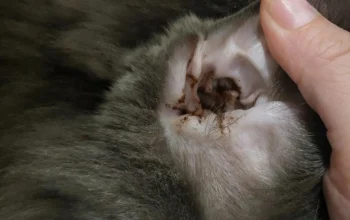Pena Global – Ever been confused about why your sweet little furball suddenly turns into a hissing, swatting ball of fury? You’re not alone. Aggressive cat behavior can take any cat owner by surprise—and it can be frustrating (and even painful) if you don’t know what’s causing it or how to respond. Whether it’s a swipe during cuddle time or growling out of the blue, understanding the root of your cat’s aggression is the first step to helping them (and you) chill out.
Cats aren’t naturally mean. But they do have a strong sense of territory, personal space, and sometimes anxiety. When any of these are disrupted, your cat might start acting up. In this article, we’ll break down the causes of aggression and give you easy, real-world ways to deal with it calmly and effectively.
Table of Contents:
What Causes Aggressive Cat Behavior?
Not all aggression is created equal. Some cats lash out because they’re scared, others because they’re in pain, and some just because you interrupted their nap in the sun. Let’s dig into the most common causes.
1. Territorial or Hunting Instincts
Cats are hardwired to protect their space. If a new pet, person, or even a piece of furniture shows up in what they consider their domain, they might get defensive. Also, some cats show aggression as a form of play that mimics hunting—it’s not personal, just instinct.
2. Stress, Fear, or Anxiety
Changes in routine, loud noises, visitors, or other pets can overwhelm your cat. They may respond with hissing, hiding, or even biting. An anxious or fearful cat is more likely to act aggressively, especially if they feel cornered or unsafe.
3. Rough Handling
Not all cats like being cuddled or picked up. Especially if done roughly or when the cat isn’t in the mood, your furry friend might respond by swiping or scratching. It’s their way of saying “No thanks.”
4. Physical Pain or Discomfort
If your usually calm cat suddenly becomes aggressive, it might be time for a vet visit. Conditions like arthritis, dental problems, or infections can make cats irritable and reactive to touch.
5. Hormonal Imbalances
Certain medical conditions like hyperthyroidism can make your cat more agitated or restless. If the behavior change is sudden and unexplained, rule out hormonal issues with a vet check-up.
6. Early Weaning
Cats separated too early from their mother may not have learned important social skills. This can result in inappropriate biting or scratching behavior as they grow older.
How to Calm an Angry or Aggressive Cat
Now let’s talk about what you can do. The good news is, there are several proven ways to manage and reduce aggressive cat behavior.
1. Give Your Cat Space
If your cat is angry or agitated, don’t push it. Let them retreat to a quiet area and calm down on their own. Forcing interaction can worsen the behavior.
2. Avoid Physical Contact
No petting, no picking up—just leave them be. Even if you mean well, touching a cat that’s in a bad mood can lead to bites or scratches.
3. Use Calming Scents and Tools
Try aromatherapy (safe for cats), pheromone diffusers like Feliway, or calming herbs like silver vine or catnip. These can help soothe your cat naturally.
4. Identify and Avoid Triggers
Figure out what sets your cat off. Is it another pet? Loud music? Strangers? Once you know, you can minimize these stressors or help your cat adapt gradually.
5. Offer Interactive Toys
Bored cats act out. Keep them mentally stimulated with puzzle feeders, laser pointers, or feather wands. A busy cat is a happy cat.
6. Reward Calm Behavior
Use treats to reinforce calmness. When your cat is relaxed, reward them with their favorite snack. This helps build positive associations with being chill.
7. Keep Kids Away Temporarily
If you have young children, it’s a good idea to give your cat space. Kids can unintentionally provoke cats by being too loud or too grabby.
8. Encourage Safe Socialization
Gradually introduce your cat to new people or pets in a calm and controlled way. Don’t rush it. Let your cat take the lead.
9. Separate Fighting Cats
If you have multiple cats and they’re fighting, separate them immediately and reintroduce them slowly over time with scent swapping or feeding on opposite sides of a door.
10. Create a Safe Hideaway
Give your cat a designated retreat space with a cozy bed, maybe a box or covered nook. When they feel safe, they’re less likely to act out.
11. Avoid Yelling or Hitting
Never yell or hit your cat—this will only increase fear and aggression. Stay calm, use a gentle tone, and show them you’re not a threat.
When to See a Vet or Behaviorist
If your cat’s aggressive behavior is ongoing, intense, or unprovoked, it’s best to consult a vet. Medical issues might be to blame. If your cat is physically fine, a feline behaviorist can help pinpoint and treat psychological causes.
Final Thoughts
Your cat’s aggression isn’t about you—it’s about something they’re feeling or experiencing. With patience, awareness, and the right tools, you can help them feel safe and loved again. Dealing with aggressive cat behavior can be tough, but it’s absolutely manageable.
What do you think? Let’s help your furry friend feel a little more peaceful today.





